Venus Optics LAOWA STF 105 mm f/2 (T3.2)
3. Build quality
In the photo below the Venus Optics LAOWA STF 105 mm f/2 (T3.2) is positioned next to the Canon EF 100 mm f/2.8L IS USM Macro.
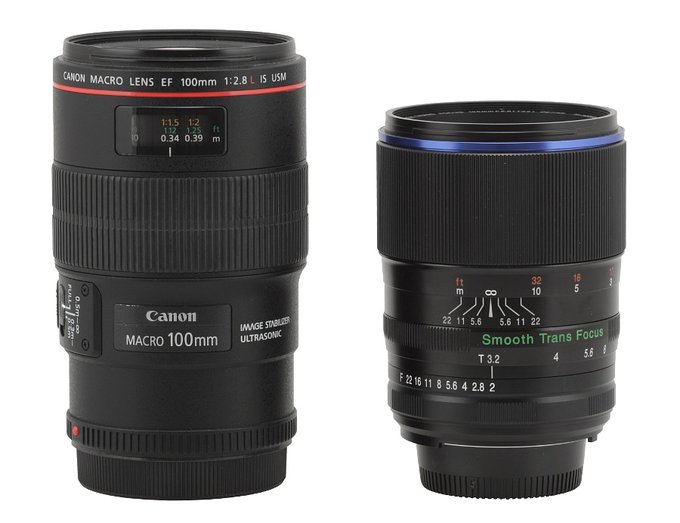 |
Please Support UsIf you enjoy our reviews and articles, and you want us to continue our work please, support our website by donating through PayPal. The funds are going to be used for paying our editorial team, renting servers, and equipping our testing studio; only that way we will be able to continue providing you interesting content for free. |
- - - - - - - - - - - - - - - - - - - - - - - - - - - - - - - - - - - - - - - - - - - - - - - -
The tested lens starts with a metal mount surrounding a rear element 31 mm in diameter. That element doesn’t move and is positioned on the same level as the mount with the focus set at infinity; when you pass to the minimum focusing distance it hides inside the casing almost 2 cm deep. The interior of the tube is well blackened and ribbed but sometimes a slit appears between the edge of the element and the tube itself through which dust might invade the interior of the lens.
The Nikon F mount version is devoid of any contacts but it has an aperture coupling. Due to that device, after entering information about the focal length and the maximum relative aperture to the camera, the EXIF file of your photo will include the focal length and the aperture values.
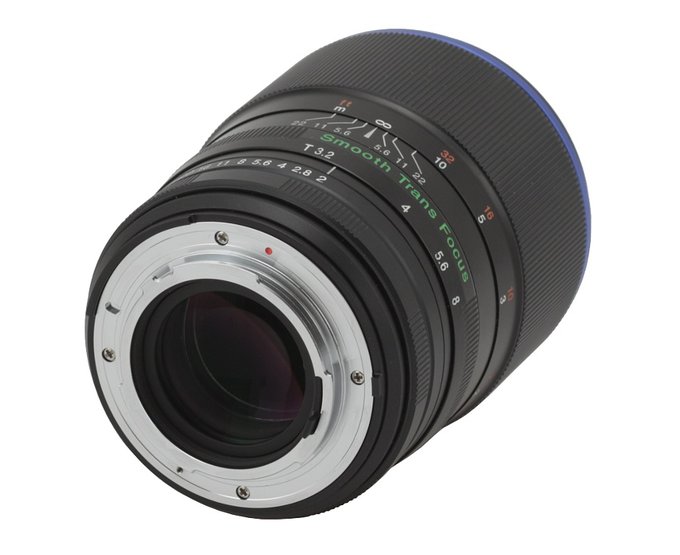 |
An aperture ring is the first element of the proper lens body. One part of the ring is ribbed for firmer handling and on the other part you find information about the aperture which can be changed every 1 EV step in a range from f/2.0 to f/22. The ring moves smoothly and is well-damped.
The next part consists of a ring marked as “Smooth Trans Focus”. The ring is stepless and introduces another aperture with 14 diaphragm blades, positioned before the special Apodization element. Its task is to soften the bokeh mainly by changing the amount of effective light from T3.2 to T8.
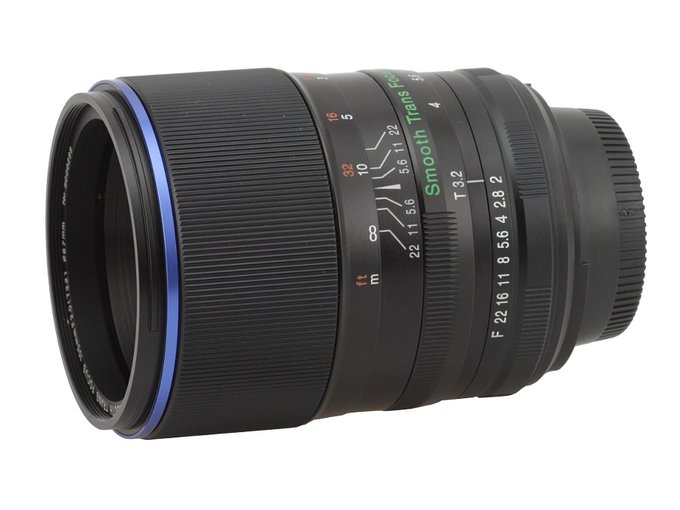 |
Further on you see a clear depth of field scale with markings at f/22, f/11 and f/5.6; above there is a comfortable manual focus ring, 44 mm wide. It moves smoothly and is well-damped in its whole range which amounts to as much as 270 degrees, a value worth good manual lenses. Still the fact that the scale ends exactly with the infinity mark is a bit alarming – there is no reserve for different temperatures or wavelengths.
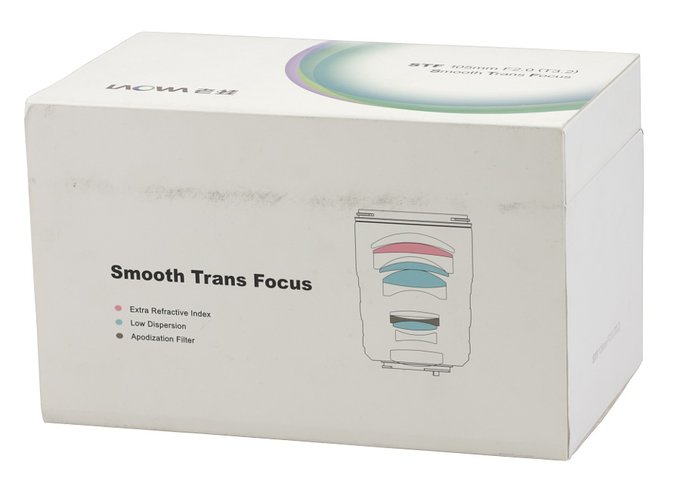 |
The body of the lens ends with a blue ring which turns into a hood mount. The front element moves along the whole optical system and is 5 cm in diameter. It is surrounded by an inscription stating the name and parameters of the lens along with the company’s logo, the serial number and a non-rotating filter thread, 67 mm in diameter. The producer doesn’t give you the place of production but the lens was made in China.
When it comes to the optical construction you deal here with 11 elements positioned in 8 groups. The producers weren’t stingy when it comes to special elements: the lens features one HR (High Refractive Index), three LD (Low Dispersion) and one special Apodization element. The last one is a kind of graduated ND (neutral density) filter; it becomes thicker towards the perimeter, gradually reducing the amount of light transmission towards the periphery. Its presence is supposed to ensure nice, silky rendition of out-of-focus blur and, for obvious reasons, it influences the amount of gathered light as well. The producers don’t try to conceal that fact, stating that the real aperture fastness of the lens amounts to T3.2. Geometrically you deal here with a 2/105 instrument and that geometry provides appropriate depth of field. When you focus on light gathering, though, you get a 3.2/105 instrument.
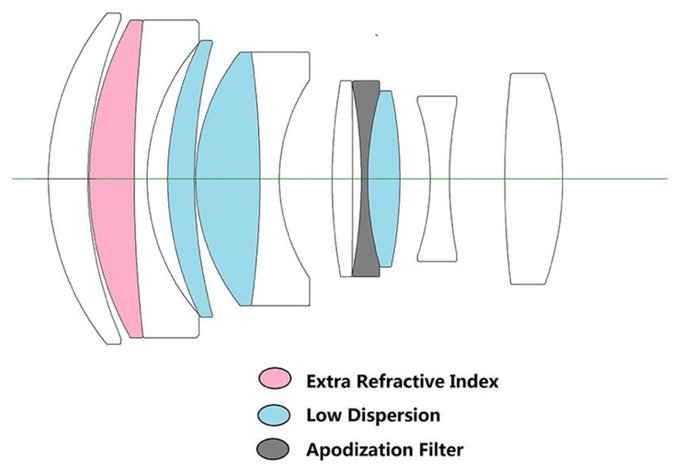 |
It’s worth emphasizing here that the tested lens features two apertures. A conventional 9-blade device controls the f/number in the usual way and allows the lens to be stopped down to a value of f/22. I don’t doubt that the producer intended it to be round but, as it often happens with the China-produced equipment, after stopping down you can only dream about a nice, circular shape (see photos below). What’s even more interesting, the aperture can close differently from one frame to another…Two following photos were taken one after another and the aperture looks different in either of them.
| Nikon D3x, f/11.0 | Nikon D3x, f/11.0 |
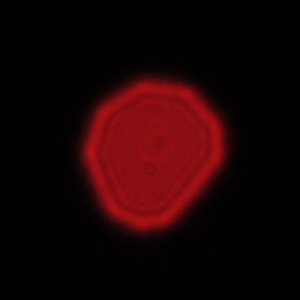
|
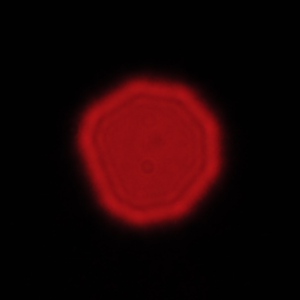
|
The second diaphragm (situated as the first if you take into account the distance from the front element) is controlled via the Smooth Trans Focus ring and its performance is much better. Its shape is more circular and it is a stepless 14-blade design.
Buyers get both caps and a hood in the box.
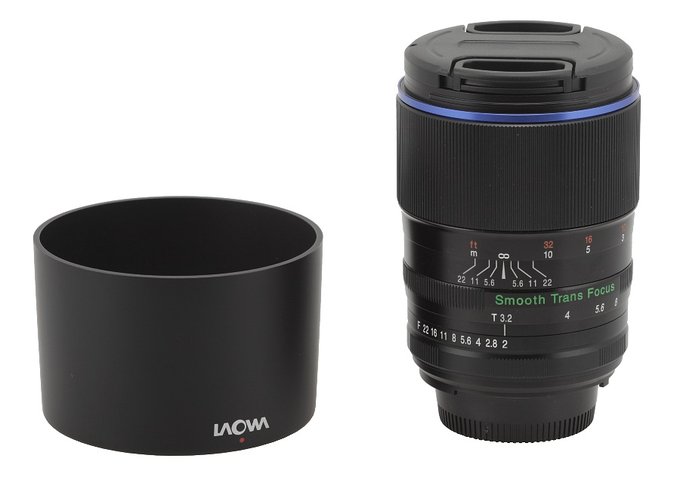 |






